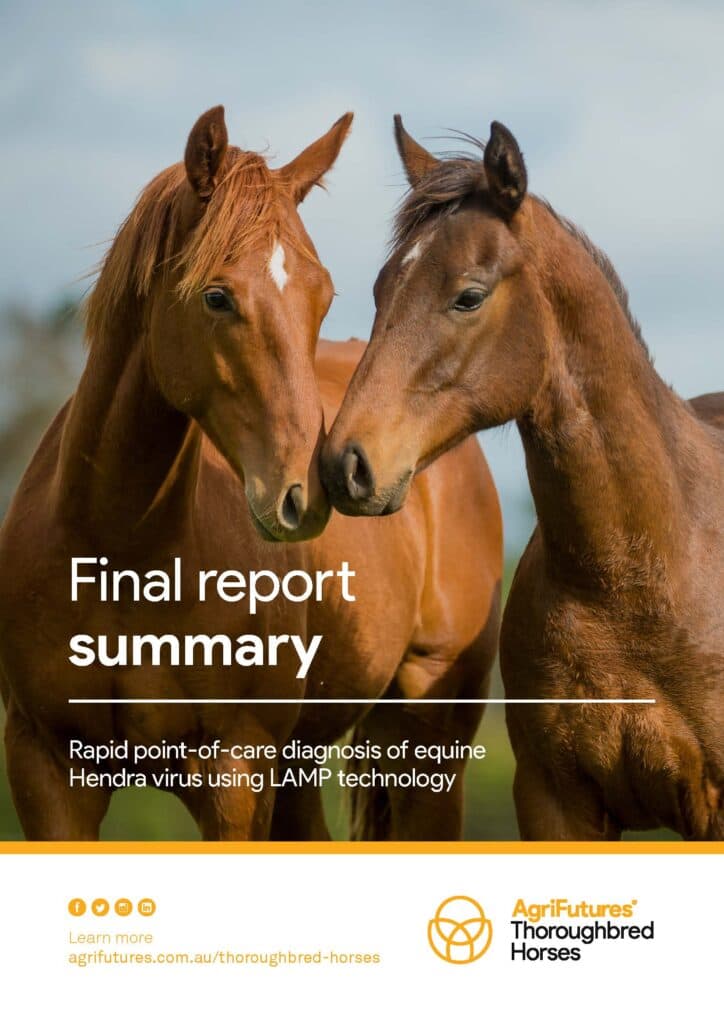Project overview: A strategy to increase demand for retired Thoroughbreds in Australia
The Thoroughbred industry in Australia is the second largest in the world, both in terms of breeding and the number of races held. The industry...
 THOROUGHBRED HORSES
THOROUGHBRED HORSES 
8 pages
Published: 2 Dec 2021
Author(s): Ben Ahern, Lyndal Hulse
Download report PDF
DownloadHendra virus (HeV) is a lethal pathogen that poses a serious public health concern. Periodic virus transfer from flying foxes to horses still occurs intermittently, potentially exposing veterinarians, veterinary clinic staff and horse handlers to the biosafety level 4 pathogen. Current tests for HeV are performed in state diagnostic laboratories and are generally time consuming, which can lead to delays in diagnosis and consequent welfare implications for the horse.
This project developed a rapid diagnostic point-of-care (POC) molecular test based on loop mediated isothermal amplification (LAMP) that is performed on specialised equipment known as the Genie® III, and that can be performed within the veterinary clinic. In combination, the project also developed a method of virus inactivation of samples to safeguard operators from possible infection.
The POC LAMP test performed on the portable Genie® III means the HeV status of a horse can be confirmed within one hour of sample collection. The results have been presented to state and federal government agencies, and the researchers are actively following a regulatory pathway to seek approval for clinical use.